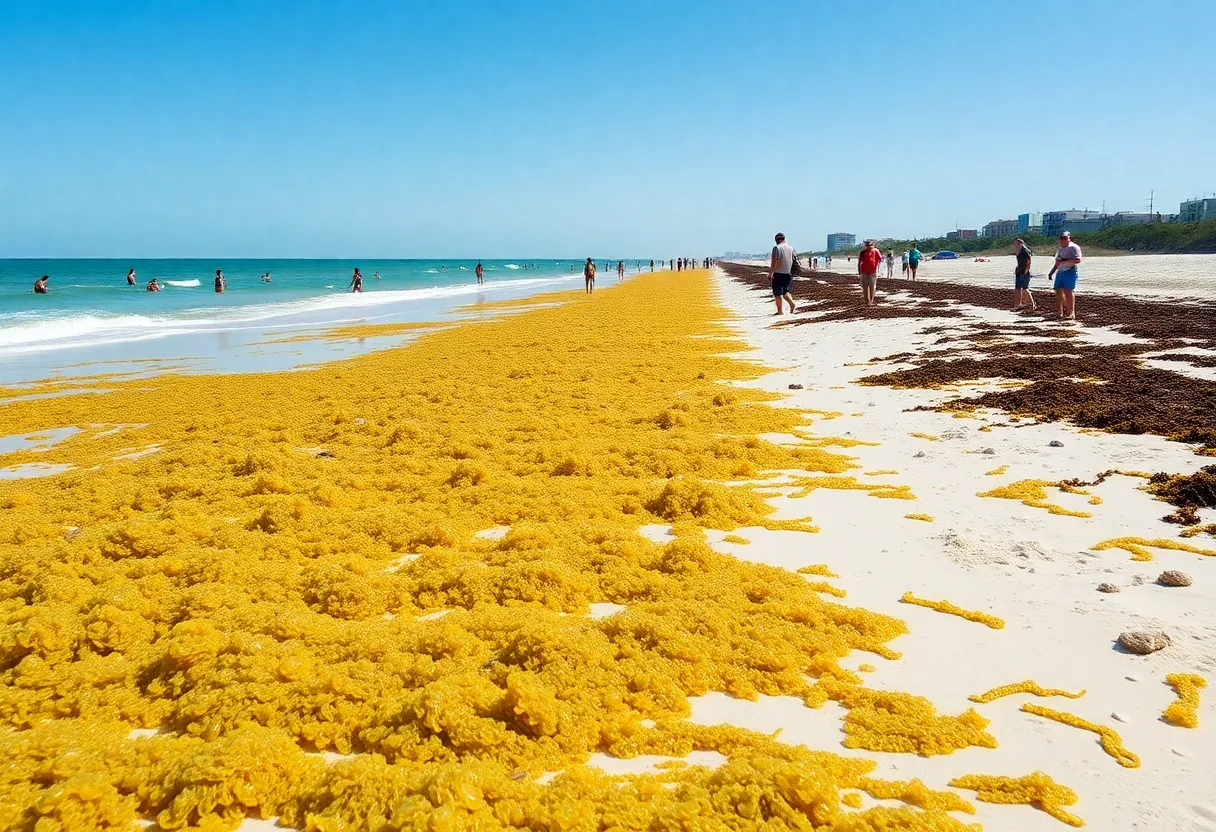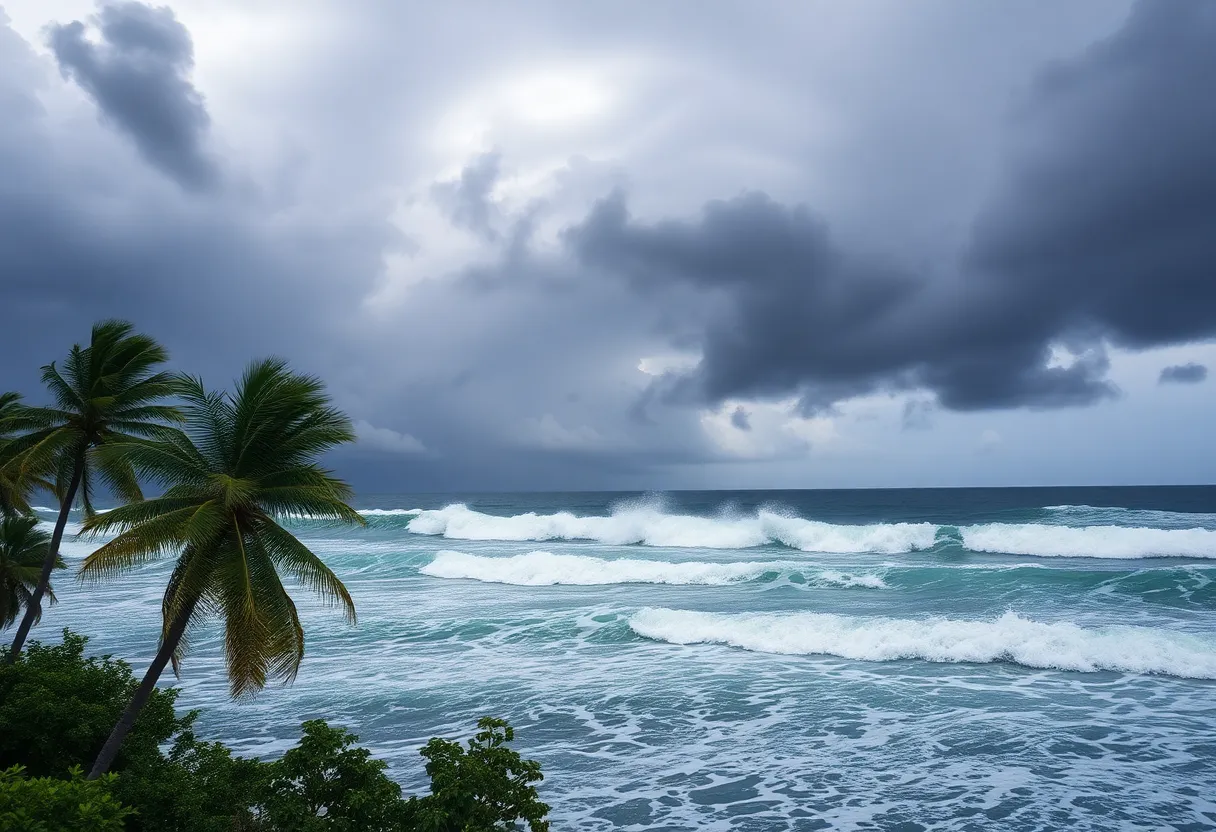News Summary
Florida beachgoers are bracing for a challenging summer due to record levels of sargassum seaweed, which have surged over 200% compared to last year. This influx poses potential health risks as it decays, releasing harmful gases. Experts attribute this increase to warmer ocean temperatures and changes in wind patterns. While sargassum can impact the beach experience, it also serves as a crucial habitat for marine species. Local agencies are implementing monitoring strategies as they navigate the effects of this environmental phenomenon.
Florida beachgoers this summer are facing the prospect of dealing with record levels of sargassum seaweed, which has already begun impacting the state’s shores. The University of South Florida’s Oceanography Lab has reported that sargassum levels in April 2025 were over 200% higher than the same time last year, contributing to a new record. The total recorded sargassum in the Atlantic this April measured approximately 40% above the previous all-time high established in June 2022.
In total, an estimated 13 million metric tons of sargassum was documented drifting between Africa and the Caribbean. The peak season for sargassum, which primarily affects Florida’s east coast, generally runs from April through August, signifying a challenging summer ahead for beachgoers.
Experts attribute the dramatic increase in sargassum levels to various environmental conditions. Warmer ocean temperatures and intensified wind patterns have both played critical roles in driving the significant rise in sargassum. In fact, reports indicate that parts of the Florida Keys have already started to experience sargassum washing ashore in recent weeks.
While generally harmless when submerged in water, sargassum poses potential risks when it begins to decay on land. As it decomposes, sargassum can release harmful gases such as hydrogen sulfide and ammonia, which could aggravate respiratory health, particularly for individuals suffering from asthma. As a precaution, the Florida Department of Health has issued guidance advising against touching or swimming near sargassum.
Historically, sargassum was predominantly found within the Sargasso Sea and the Gulf of Mexico, but since 2011, it has proliferated into a vast network extending over 5,000 miles across the tropical Atlantic. Local governments in Florida typically allocate millions of dollars each year for sargassum cleanup efforts along the beaches, as its accumulation not only affects the beach experience but also local ecosystems.
Nonetheless, there is a silver lining to the sargassum blooms; recent developments have led to businesses investigating innovative ways to repurpose this seaweed. For instance, a Mexican company has pioneered a method to create shoe soles from recycled sargassum. Given the current trends, experts predict a pressing need for enhanced strategies aimed at both managing and potentially utilizing these significant amounts of seaweed.
The sargassum’s arrival along Florida beaches is significantly influenced by ocean currents and wind patterns, which remain challenging to predict. Current analysis suggests that the Gulf Stream could mitigate some sargassum from reaching areas like Pinellas beaches, although unpredictability in oceanographic conditions can still shift the situation rapidly.
The ecological benefits of sargassum should also be noted, as it serves as a vital habitat and nursery for a variety of marine species, including crabs, shrimp, and economically important fish such as mahi mahi. However, the unpleasant odor that accompanies decomposed sargassum can deter beachgoers and lead to skin irritations due to organisms that may inhabit the seaweed.
In response to rising sargassum levels, local agencies are employing tools such as the NOAA and the University of South Florida’s experimental Sargassum Inundation Report to monitor and manage coastal conditions. Increased occurrences of sargassum have also been linked to shifts in global weather patterns and changes in the ecosystems and nutrient flows from rivers, including the Amazon.
As Florida gears up for what could be a challenging summer season, the combination of management efforts, public awareness, and innovative repurposing initiatives may play key roles in navigating the impacts of sargassum on the state’s beaches.
Deeper Dive: News & Info About This Topic
- Weather.com: Florida Braces for Record Bloom of Sargassum Seaweed
- Wikipedia: Sargassum
- Fox 13 News: Record High Amounts of Sargassum Seaweed
- Google Search: Sargassum Seaweed
- USA Today: Sargassum Seaweed Bloom Sets New Record
- Google Scholar: Sargassum Seaweed
- Click Orlando: Largest Bloom of Sargassum Returns
- Encyclopedia Britannica: Sargassum

Author: STAFF HERE PETERSBURG WRITER
The ST PETERSBURG STAFF WRITER represents the experienced team at HEREStPetersburg.com, your go-to source for actionable local news and information in St Petersburg, Pinellas County, and beyond. Specializing in "news you can use," we cover essential topics like product reviews for personal and business needs, local business directories, politics, real estate trends, neighborhood insights, and state news affecting the area—with deep expertise drawn from years of dedicated reporting and strong community input, including local press releases and business updates. We deliver top reporting on high-value events such as Grand Prix of St. Petersburg, Localtopia, and SHINE Mural Festival. Our coverage extends to key organizations like the St. Petersburg Area Chamber of Commerce and St. Pete Downtown Partnership, plus leading businesses in finance, manufacturing, and healthcare that power the local economy such as Raymond James Financial, Jabil, and Bayfront Health St. Petersburg. As part of the broader HERE network, including HEREJacksonville.com, HEREOrlando.com, HERETallahassee.com, and HERETampa.com, we provide comprehensive, credible insights into Florida's dynamic landscape.





